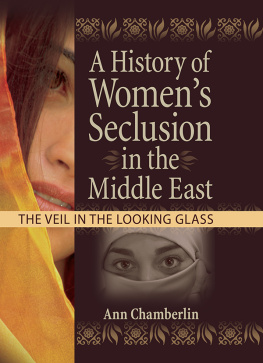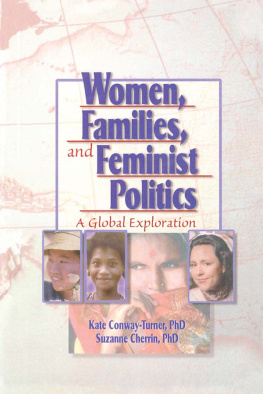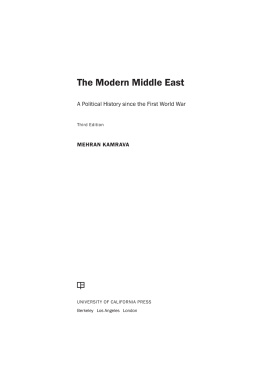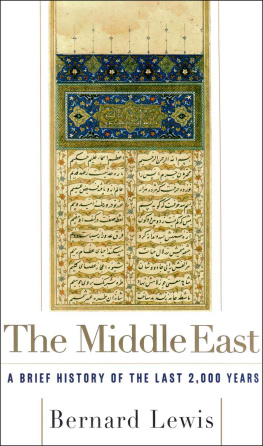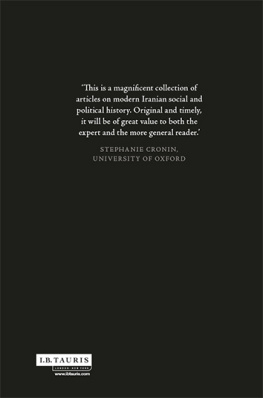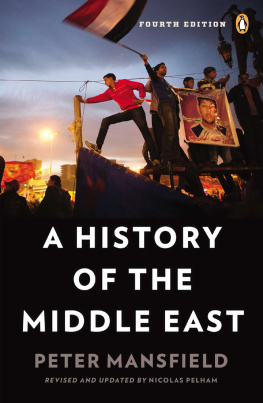2006 by Ann Chamberlin. All rights reserved. No part of this work may be reproduced or utilized in any form or by any means, electronic or mechanical, including photocopying, microfilm, and recording, or by any information storage and retrieval system, without permission in writing from the publisher.
First published by:
The Haworth Press, Inc., 10 Alice Street, Binghamton, NY 13904-1580.
This edition published 2011 by Routledge:
Routledge
Taylor & Francis Group
711 Third Avenue
New York, NY 10017
Routledge
Taylor & Francis Group
2 Park Square, Milton Park
Abingdon, Oxon OX14 4RN
PUBLISHERS NOTE
The development, preparation, and publication of this work has been undertaken with great care. However, the Publisher, employees, editors, and agents of The Haworth Press are not responsible for any errors contained herein or for consequences that may ensue from use of materials or information contained in this work. The Haworth Press is committed to the dissemination of ideas and information according to the highest standards of intellectual freedom and the free exchange of ideas. Statements made and opinions expressed in this publication do not necessarily reflect the views of the Publisher, Directors, management, or staff of The Haworth Press, Inc., or an endorsement by them.
Cover design by Kerry E. Mack.
Library of Congress Cataloging-in-Publication Data
Chamberlin, Ann.
A history of womens seclusion in the Middle East : the veil in the looking glass / Ann Chamberlin.
p. cm.
Includes bibliographical references and index.
ISBN-13: 978-0-7890-2983-6 (hc. : alk. paper)
ISBN-10: 0-7890-2983-9 (he. : alk. paper)
ISBN-13: 978-0-7890-2984-3 (pbk. : alk. paper)
ISBN-10: 0-7890-2984-7 (pbk. : alk. paper)
1. WomenMiddle EastSocial conditions. 2. WomenMiddle EastHistory. 3. Womens rightsMiddle East. I. Title.
HQ1726.5.C45 2006
305.40956
2006001664
This book is dedicated to Umm Ismil: I never saw her face, knew her by more than her eldest sons name, nor could I, the night we met, understand a word she spoke. We havent met again. Yet, her quiet confidence by the light of her dung fire and the obvious reverence in which she was held by husband, children, friends, and neighbors knocked the flimsy supports out from under my brash Western feminism, sending it into a free fall which finally came to rest in this book.
A few years ago I was walking along a street in Milan with a very radical Italian friendan anarchist, in factchatting about this and that, including women in Islam. Muslims hate women, said my friend. They put them in sacks.
I stopped and looked around. I pointed to one, two, half a dozen advertising posters selling who-knows-what commodities by means of huge photos of women, mostly naked, pneumatic babes. Do these signs indicate that Europeans love women? I asked.
He conceded that I had a point.
The controversy in France about Muslim high school girls who say they want to wear head scarves has been going on for years. Ive been impressed by the fact that not one French political tendency, left, right, or center, has expressed any sympathy for these girlswith the sole exception of a few eccentric philosophers interested in difference. Foucault was condemned simply for trying to understand modern Islam, much less defending it.
French leftists all seem to assume that the girls are lying or brainwashed by their families, and must be forcibly liberated from their own expressed desire for modesty. Bureaucratic socialism in France retains its ancient loyalty to Bonapartist centralism and secularismbut so do all the conservative parties. As in America, exploitation of women in advertising is defined as freedom of speech. In France young women must display themselves regardless of whether they want to. Everyone must be the samean ideology that suppresses Occitan and Breton culture as well as Islamic culture.
Personally, I do not defend the veil. In fact, even the Koran and Hadith offer little support for extreme modern forms of purdah, which certainly oppress women in countries such as Afghanistan or Saudi Arabia. What I object to are the silly misinformed prejudices about Islam that still circulate as fact in Western media and literatureand therefore in Western brains.
For example, the customs of the zenana, and the house-boundedness of women, their seclusionthese appear to Westerners as indications of powerlessness. I was very surprised to learn that, in Iran in the 1970s, about 75 percent of all cash was controlled by women. Most Iranian men, it seems, turned over most of their salaries to their wives, keeping only enough for occasional tea and water pipes at the caf. Liquid cash constitutes real power, especially in a somewhat backward economy, does it not?
Most Western women visiting Iran were horrified by the chador and refused to wear it. Some flaunted their sexuality, defending their right to wear shorts in the mosque, etc., and then wondered why they were treated as sex objects. A few, however, came to enjoy the mystery of the chadoran impenetrable maskand also appreciated the chance to meet Iranian women. Something of this spirit suffuses the anthropological work on the Pathans by husband/wife team Chuck and Cherry Lindholm, two old friends of mine: he researched the men, and she the women. Doris Lessing also captured this mood in her little work on Afghan women during the Soviet War. Most Islamology is written by men, who never experience the womens world in any way. Thus do old Crusader fallacies still pose for objective scholarshipnot to mention harem fantasies, etc.
Another aspect of the veil that rarely emerges in Western writing involves mysticism. The veiled beloved acts in poetry as a metaphor (or manifestation) of God hidden in creation, so to speak. This tantric aspect of Sufism is rarely explored, but the great Ibn Arabi (who was himself initiated by a woman, and later initiated cloistered women by visiting them in their dreams) devotes a chapter of his Fusus al-hikam to the esoteric meaning of the Prophets love of women.
This symbolism is not simply a masculinist/patriarchalist device for suppression of women. While living in Iran I became aware that a whole feminine sphere of Sufism existed, including at least one reputed living saintbut that it was totally closed to me. A few women writers (Laleh Bakhtiar, Sachiko Murata) have touched on this hidden world, but no one has ever studied it as a whole.
Ann Chamberlin has tried to do something even more ambitious: to study the veil itself, synchronic and diachronic (back to the Stone Age), from the point of view of women themselves. She proposes a startling version of feminism that does not automatically value the modem Western
secular-rationalist ideal as an unquestioned norm or telos, but offers a more flexible and phenomenological field in which difference can be honored as well as freedom, modesty as well as sexuality, mysticism as well as economics.
In other words, this is an almost totally original workas far as I can tell. As such, it is fated either to be highly controversial and successful, or utterly ignored and forgotten. It annihilates all the clichs. This is a shocking book.


